Introduction
"I think we are closer when we are here because we are both looking at new things and seeing things for the first time together." Big and Small participant
The Big and Small programme at Tate Britain - a Big Lottery-funded, local audience development project - is mid-way through its 5th and final year of existence. Initiated by members of the Learning Department at Tate Britain following a period of local consultation, different staff members have worked on the project over the years and influenced its focus, direction, and development. Although I’ve only being working on the project for 9 months, it’s been an important and crucial time, where we’ve been taking stock of what has been achieved and how this informs the future of local outreach at the Gallery and our ’exit strategy’ for the project. This article introduces the programme and includes a focus on our off-site outreach sessions, a film of a Big and Small family day, and some thoughts on the direction this type of programming will take when the funding ends in March 2014.
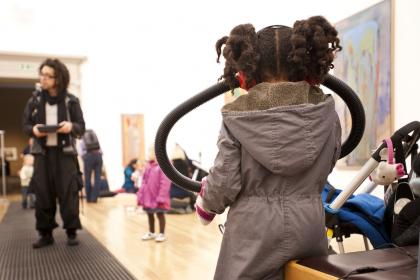
Big and Small asks how hard-to-reach audiences (our working definition includes local fathers, parents/ carers for whom English is a second language, and families from ethnic minority backgrounds) can be attracted to Tate Britain in order to enjoy creative activities as a family, and use the gallery as a resource. This includes attending organised events on site, but also becoming independent visitors who use the gallery and its collection in a self-directed way. Much of this work begins off-site and is about dedicated and long-term engagement with gatekeepers and partners in local children’s centres and the local authorities of Westminster and Lambeth. Developing relationships with partners who have a genuine interest and belief in what the gallery and contemporary arts practice can offer children and families is crucial to longer and more fruitful partnerships - where the promotion of Tate and contemporary art practice meet local partner ambitions in a balanced and two-way process. The development of a reciprocal relationship is also about the Gallery exploring local issues and needs and deciding what it can feasibly respond to. For instance, based on the research and consultation undertaken at the before Big and Small was initiated, we are currently working on a range of projects with Speech and Language therapist teams and Foster Care Support teams in both boroughs.
Following the development of a collaborative working relationship, Big and Small activity can take many different forms. From a one-off taster in a children’s centre that eventually aims to attract families to on-site First Friday sessions (artist-facilitated session in the galleries - an event seen as a type of ’bridge’ to independent access) or a big Family Day celebration; to 6-week long projects targeting different hard-to-reach groups - the programme has a tailored and ’routes through’ approach.
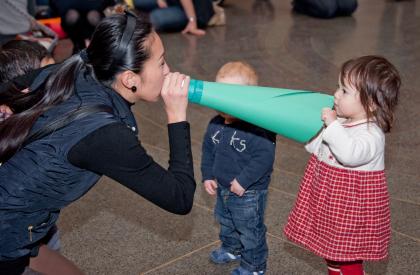
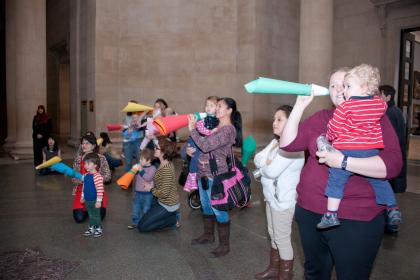
Working with Artists
"James likes to have the freedom to explore different materials in his own time. These activities allowed that to happen without a set outcome at the end. He had the freedom to use the materials in his own way, there wasn’t a wrong or right way to do something or in what to create." Big and Small participant
Working with contemporary arts practice and practitioners (currently working with a team of 6 artists and a focus on sculpture, sound and performance - listed at the end of this article), we are conscious not to replicate the kind of activity that exists in children’s centres or formal education environments. Coming from the non-formal education sector, we embrace the fact that we don’t have to adhere to a curriculum or to teaching specific skill sets - instead interested in working in a very open-ended and often experimental way that tests the boundaries of participatory working and how it can reflect and echo artists’ studio practice itself (in terms of exploring materials and processes). The film below is a lively snapshot of a Big and Small Family Day event, exhibiting the kind of open-ended practices that we embark on as part of the project, giving voice to some of the participants, with excerpts from other staff members of Big and Small talking about what it means to work on the programme.
Big & Small: Twilight of an outreach programme? from practice.ie on Vimeo.
Big and Small Futures
In its final year, we (myself, Assistant Curator, Lucy McDonald and Convenor Susan Sheddan) have been thinking about how we can capture and maintain many of the relationships that have been forged between the gallery, gatekeepers and families in the locality. This has been tackled in 2 ways this year. First of all, we have devised a Big and Small loyalty card project whereby anyone attending our taster or project strands can sign up to a loyalty card that gives discount to the shop and cafe at Tate Britain, offers the use of special Big and Small in-gallery resources, and means card owners can be informally tracked (to find out if they are attending the gallery independently). This group are contacted on a regular basis about special events at the gallery, with the option of taking part in focus-group sessions that contribute to determining the future shape of the programme. Running alongside this is an advocacy project of partners and collaborators who will meet to talk about their experience of the project, relaying how things have changed on the ground since the project began, and how they see the project moving forward and developing. This advocacy group meets for the first time at the end of November when a suite of new learning spaces open at Tate Britain (offering a range of new opportunities for families to engage in the gallery’s learning programme which we’ll write about next month).
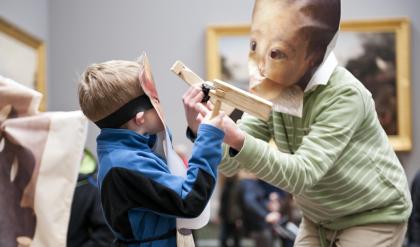
Snap shot of an outreach session - Lucy McDonald: Assistant Curator, Early Years and Families: Big and Small Programme
For me one of the most integral parts of the Big and Small Programme are the Outreach Taster Sessions we do with artists in children’s centres locally to Tate Britain. These sessions are an opportunity to provide a taster for families of what they might expect from the Early Years and Families Programme at Tate and the gallery in general.
The reason I consider these sessions to be integral is three fold (possibly even ten fold if words permitted)! Firstly they are an opportunity for local families to learn more about the gallery in a familiar environment, towards viewing the gallery as a place for them. During my time working on the outreach strand of Big and Small I have had many informal conversations with families, who have said they have seen Tate Britain on the bus or walking past numerous times but have never been in as they thought it wasn’t a place for them; especially with the children - for example, asking if children are even allowed in the gallery and won’t they just be told off for making noise? On occasion families have even gone into detail about the building itself and how they recognise it, commenting on how off-putting the imposing main entrance is with its pillars and stairs. In response, being able to explain that children are as welcome as any visitor, and that there is a more accessible entrance, contributes to lifting these anxieties.
In tandem with this, the sessions are also an invaluable opportunity for the Early Years and Families team at Tate to learn first hand from our target audience, informing what we are doing to encourage new and disengaged audiences to the gallery. Hearing our target audience’s perspective gives us an insight into designing a programme that allows opportunities to work towards breaking down their perceived and actual barriers.
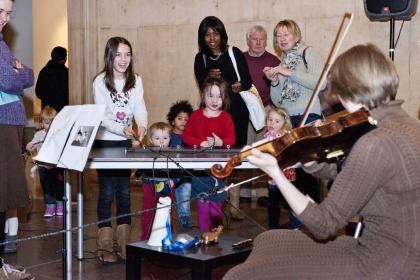
As touched upon here, we are always working towards developing local families’ confidences to access Tate as a resource that is often within minutes walk or a short bus journey from their homes. When programming the outreach strand of the Big and Small project for the final year of the project, familiarity has particularly helped address some of the barriers our audiences face. For example, we purposefully work with the same artist for a taster that we know will be facilitating events at the gallery (as part of Big and Small but also the broader pubic programme). This gives them opportunities to come to the gallery soon after the tasters, having introduced families to the artist, their practice and processes. If the visit to the gallery is their first (as it is for many of the families we work with) recognising familiar faces can alleviate some of ’the unknown’.
Finally, one thing that is clear to me from working on the Big and Small Programme with families in Westminster and Lambeth, is not underestimating the power of face to face, on the ground contact, to work towards demystifying the gallery.
Exit strategy
"I’m going to try.. it is a bit hard to be honest. I don’t want to lie and tell you that I’ll come back. I never came before I was invited to the Big and Small sessions. I really want to come back, but it’s still a bit hard for me. So it would be great if you would have more sessions like this. It will encourage more parents to come. With you it’s easier, it’s helpful. You show us things, we feel more confident then..." A Big and Small participant on returning to the Gallery independently
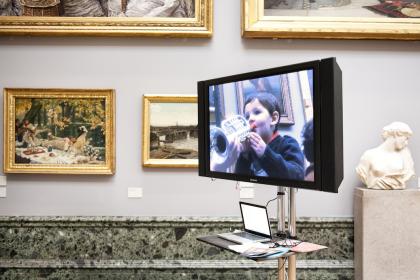
Working with hard-to-reach audiences is a major priority for Tate - not just at Tate Britain, but also at Tate Modern - so any exit strategy for Big and Small is also thinking about the boroughs surrounding Bankside too. The current loyalty project and advocacy project will inform the exit strategy in a big way - with the loyalty card focus groups helping us find out more about our target audience, and the advocacy project maintaining ties with individuals and organisations that we have worked with over the 5 years. A big aim for the Early Years and Families team is to bring our outreach and ’bridge’ activity to the core of what we do, so that it becomes central to what we do - gaining more attention both within the organisation and among the communities that might want to engage with Tate. This would mean holding regular tailored bridge events aimed at specific hard-to-reach audiences at both sites that build towards introducing the core programme to participants and that are not necessarily advertised on-line. What we may lose as this project comes to a close is the outreach and off-site element to the project which is a concern. As can be leaned from Lucy’s description of our off-site work, many of the families we are interested in working with see huge barriers to accessing Tate, and often need to be introduced on their territory. Hopefully, with the wealth of research and activity that has been amassed over the 5 years of Big and Small’s existence, we can attract the level of funding that it would need to continue. In forthcoming articles, we’ll discuss how the Big and Small programme fits into the core programme, while giving an update on the focus group and advocacy group sessions outlined above.
Big and Small artist panel:
Dan Scott - http://www.danscott.org.uk/front.html
Abigail Hunt - http://www.abigailhunt.co.uk/a.statement
Neil Luck - http://www.neilluck.com/about/about.html
Louisa Martin - http://www.louisamartin.info/
Albert Potrony - http://www.albertpotrony.co.uk/
Matt Shaw - http://www.matthewshaw.info/#!playspaces/c62k
All images (c) Tate Britain

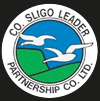
No comments added